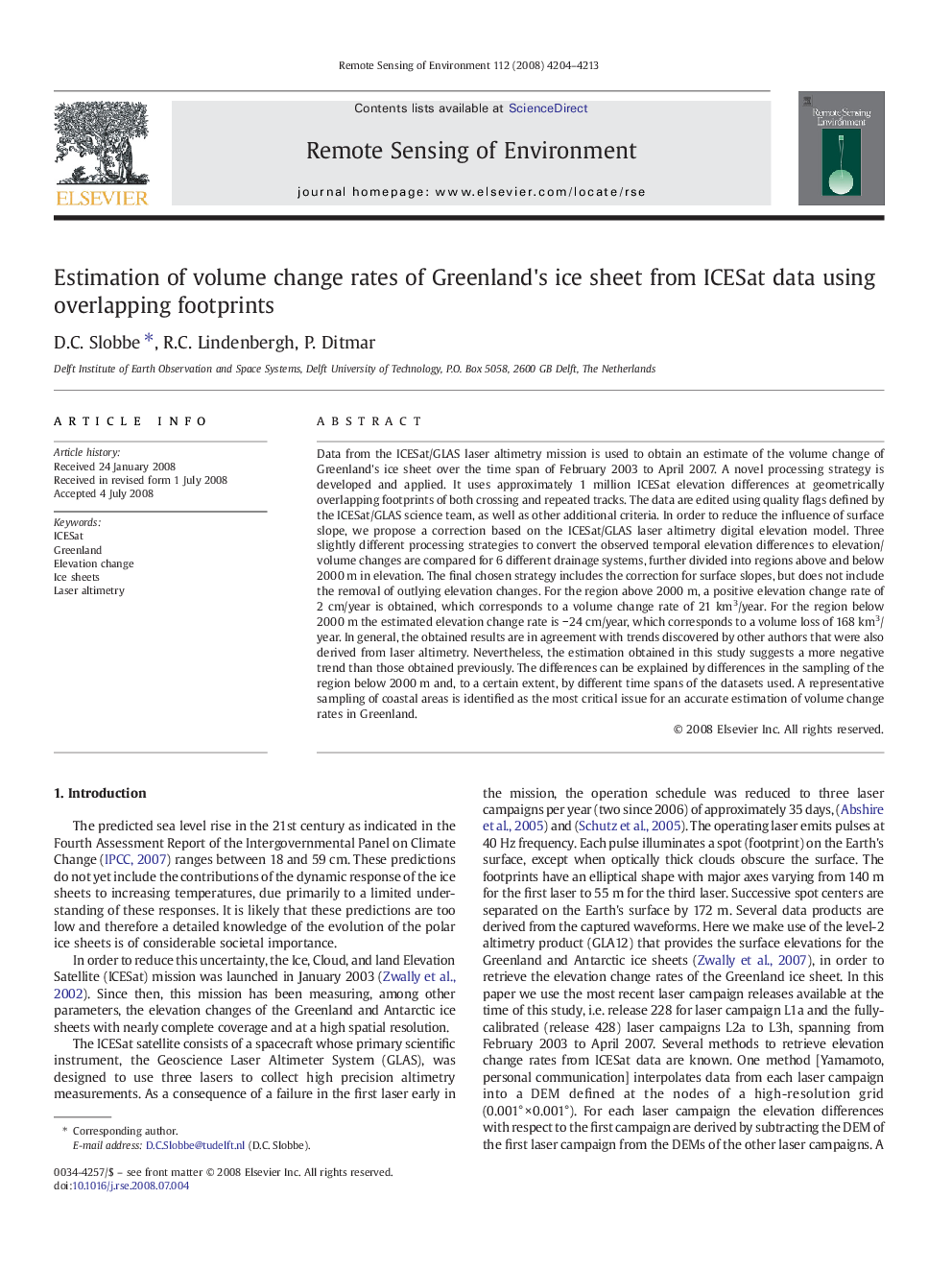| Article ID | Journal | Published Year | Pages | File Type |
|---|---|---|---|---|
| 4459856 | Remote Sensing of Environment | 2008 | 10 Pages |
Data from the ICESat/GLAS laser altimetry mission is used to obtain an estimate of the volume change of Greenland's ice sheet over the time span of February 2003 to April 2007. A novel processing strategy is developed and applied. It uses approximately 1 million ICESat elevation differences at geometrically overlapping footprints of both crossing and repeated tracks. The data are edited using quality flags defined by the ICESat/GLAS science team, as well as other additional criteria. In order to reduce the influence of surface slope, we propose a correction based on the ICESat/GLAS laser altimetry digital elevation model. Three slightly different processing strategies to convert the observed temporal elevation differences to elevation/volume changes are compared for 6 different drainage systems, further divided into regions above and below 2000 m in elevation. The final chosen strategy includes the correction for surface slopes, but does not include the removal of outlying elevation changes. For the region above 2000 m, a positive elevation change rate of 2 cm/year is obtained, which corresponds to a volume change rate of 21 km3/year. For the region below 2000 m the estimated elevation change rate is − 24 cm/year, which corresponds to a volume loss of 168 km3/year. In general, the obtained results are in agreement with trends discovered by other authors that were also derived from laser altimetry. Nevertheless, the estimation obtained in this study suggests a more negative trend than those obtained previously. The differences can be explained by differences in the sampling of the region below 2000 m and, to a certain extent, by different time spans of the datasets used. A representative sampling of coastal areas is identified as the most critical issue for an accurate estimation of volume change rates in Greenland.
